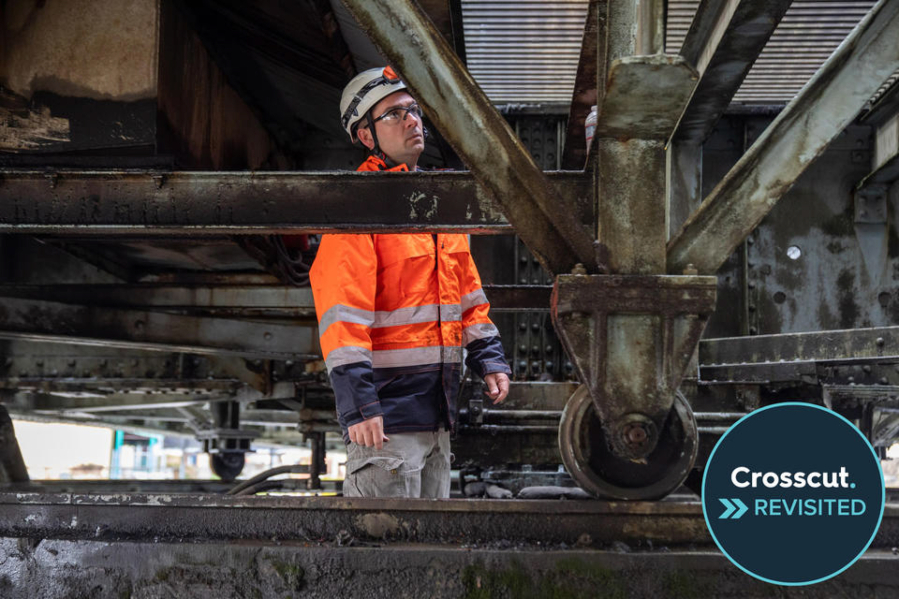It will take a few more years for federal bridge dollars to reach Washington roadways. Of the $244 million of federal bridge funds passed down to the state, as of early December WSDOT had allocated about 13% to specific projects.
“Preservation projects are an agency priority but they also can take some time to fully realize from design to construction. The design process alone can take at least two years in some cases,” Werner wrote in an email. “These funds roll over, so we still expect to spend the money as projects are ready to begin the construction phase.”
Transportation officials anticipate spending more of the federal dollars as more projects move into the construction phase, Werner wrote, expecting that nearly $200 million will be allocated over the next two years.
So far about 6% of the funds have gone to structures rated in the worst condition, according to Werner. That percentage is expected to increase, as WSDOT plans to send 51% of the funding to bridges in poor condition over the next two years.
Seventeen of Washington’s 39 counties have at least 5% of their bridges deemed in poor condition, a Crosscut investigation found earlier this year. At that time, approximately 530 bridges had condition ratings of “poor.”
Bridges receive a rating following regular inspections, which occur about once every two years. After inspectors examine and assign a numerical value to the condition of the deck, the superstructure – which supports the roadway – and the substructure, a score is then compiled into an overall rating. A classification of poor does not mean a bridge is unsafe or structurally deficient, though a low grade does place a bridge higher on the repair or replacement list.
In 2022, the Washington Legislature’s Joint Transportation Committee divided the federal bridge funds between state and locally owned structures, sending 39% to cities and counties.
WSDOT’s Local Programs Office is administering those funds. In 2022 and 2023, counties and cities submitted to the office more than 200 bridge projects costing an estimated $770 million, according to data provided by WSDOT. The work ranges from replacement and rehabilitation to seismic retrofitting, patching potholes and other roadway repairs.
The Bridge Advisory Committee, made up of county and city representatives from around the state, picked 21 applications, sending 12 counties a combined $22 million from the federal bridge dollars, according to data shared by WSDOT.
Snohomish County received the most – $9.6 million – from the pot of money set aside for municipalities, slated to replace the Edgewater Bridge in south Everett and the Pilchuck Creek Bridge located near Stanwood. Both are rated in poor condition.
A $8.8 million project to paint the Pioneer Memorial Bridge on US 395, which traverses the Columbia River in Kennewick, received the most federal money allocated in 2022 and 2023 to state-owned bridges. This bridge is rated in fair condition.
One of those bridges rated in poor condition which will have to wait a little longer for repairs is the Wishkah River Bridge over US Highway 12, dubbed the “Entrance to Aberdeen.” It connects the beach towns of Ocean Shores and Seabrook with the rest of the state.
In Grays Harbor County, where river channels and waterways define the region, nearly one in 10 bridges is rated in poor condition.
In need of new mechanical components, the Wishkah River Bridge project was previously scheduled to solicit bids in spring 2023. Funding, according to a WSDOT spokesperson, is the main reason the agency pushed the project back two years.
As WSDOT and other transportation departments implement the unprecedented level of bridge federal funding, U.S. Sen. Patty Murray (D-Washington) and other elected officials recognize the state will need more.
“I’ll keep using every tool at my disposal as Chair of the Appropriations Committee to help deliver robust annual funding for transportation programs that are an important piece of the funding puzzle for the long list of important projects across the state,” Murray said in a statement to Crosscut.
Federal lawmakers recently announced an additional $600 million in federal aid to help pay for the replacement of the Interstate Bridge connecting Washington and Oregon along Interstate 5. The final cost of the project is expected to be $5 billion to $7.5 billion.
Even with the historic federal investment in bridges, less funding is going toward preservation for the entire transportation system. State legislators set aside less for these types of projects in the 2023-2025 budget than in the previous one, according to WSDOT.
“The traveling public has already seen some of the immediate effects in the form of failing pavements, potholes, speed reductions, weight restrictions, short- and long-term closures,” Pasco Bakotich, director of maintenance operations at WSDOT, told the Washington State Transportation Commission in October.
WSDOT estimates the agency needs about $2.07 billion a year to meet all the maintenance and preservation needs, but receives less than half that.



